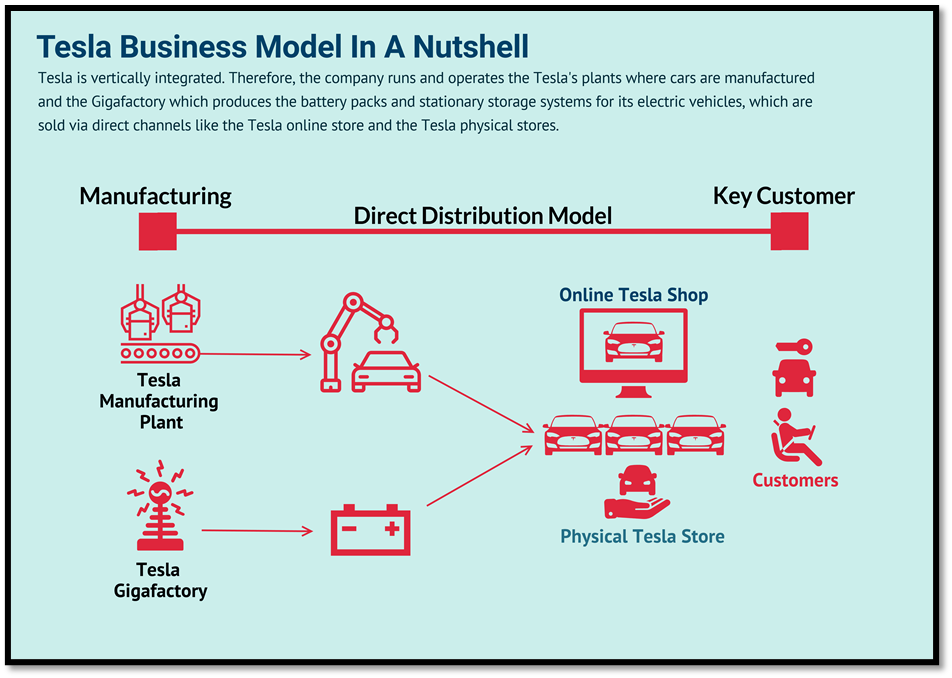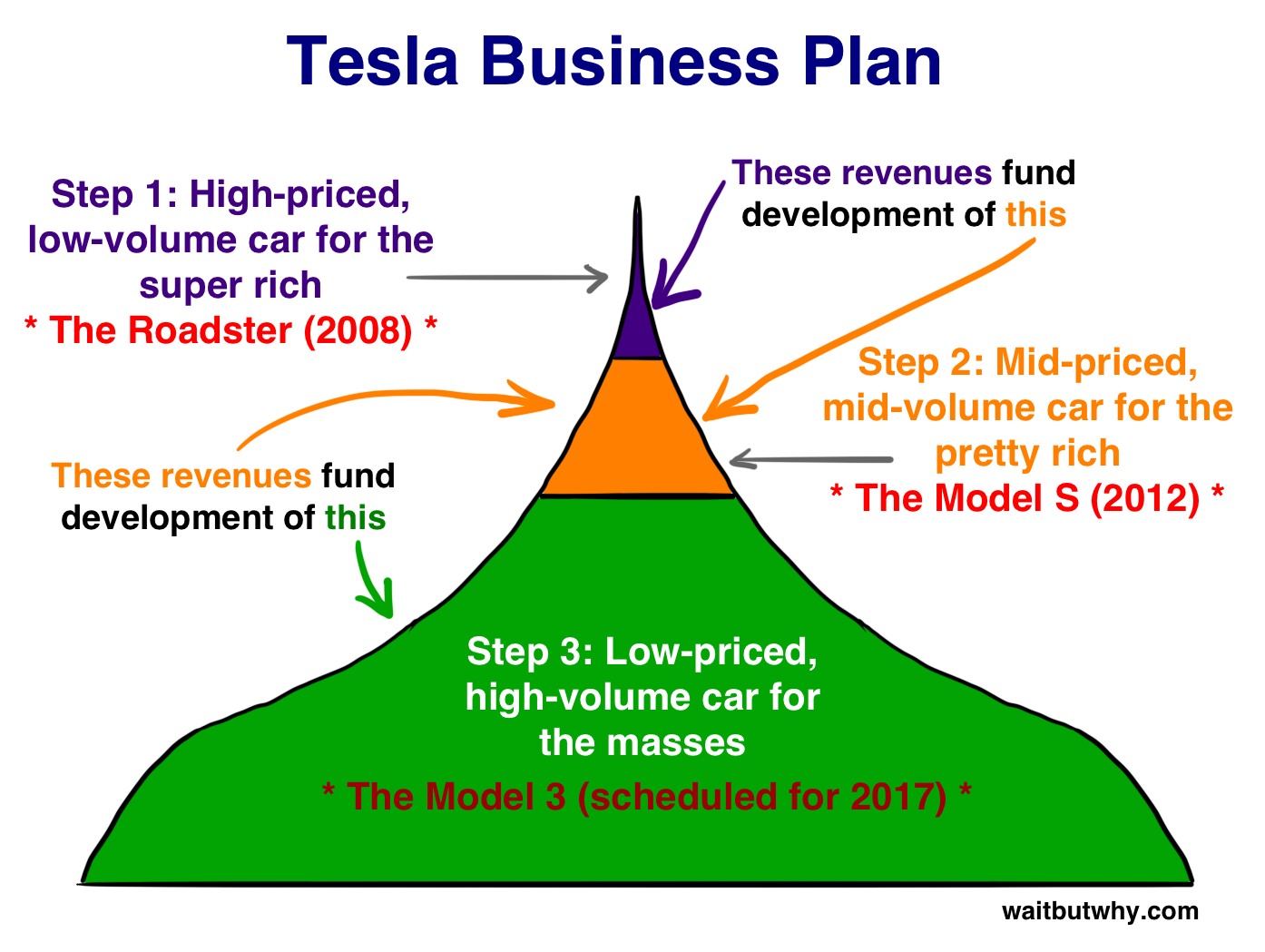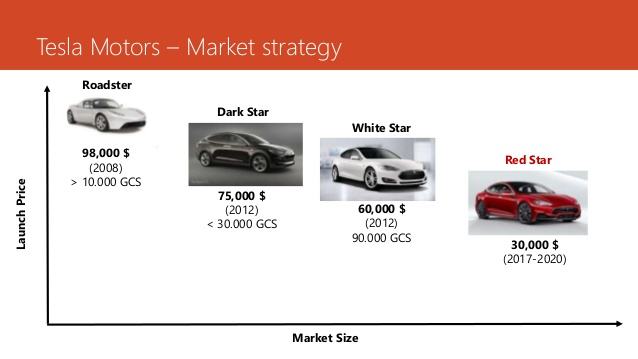Deconstruction Of Tesla Business Model Canvas
Question
Task:
You are required to write a 2000-word report for a novel business proposal you have developed. The business proposal must build upon your novel value proposition developed in assessment 1 for the existing business or organisation selected in assessment 1. You must use appropriate headings to structure the body of the report.
Your report must demonstrate:
1. Logical and persuasive articulation of: business model description; value proposition development; business operations development; supply chain development; competitive advantage; financial value capture and strategic fit (this includes elements 5 to 10 in the disciplined entrepreneurship canvas and elements 3 to 9 in the business model canvas). 40%
2. Logical and persuasive argumentation in regard to how assumptions and uncertainties related to: customer desirability; technical feasibility; and financial viability have been addressed to date and how they will be addressed in the future as described in a phased development plan. 16%
3. Logical and persuasive argumentation for the selection of the innovation tools and techniques used to support the report findings and recommendations. These must be beyond the tools and techniques used in assessment 1. Minimum five (5) additional tools and techniques must be selected from the provided list of tools and techniques. 6%
4. Logical and persuasive application of the selected innovation tools and techniques used to support the report findings and recommendations. These must be different to the tools and techniques used in assessment 1. Minimum five (5) additional tools and techniques must be applied from the provided list of tools and techniques. 8%
5. Candid and critical self-reflection about assessment 2 tasks including: a reflection on the development of personal innovation capabilities and practices; identification of own personal strengths and weaknesses; supported with suggestions for self-improvement. 10%
6. Clear flow of thought throughout the report with: a convincing executive summary; clear and succinct purpose described in the introduction; relevant structure and content within the body of the report; and a clear and succinct conclusion. 6%
7. Critical review skills and integration of relevant academic and professional literature. A minimum of ten (10) academic and professional references must be used. 4%
8. Appropriate in-text referencing and reference list. Adherence to CQUniversity APA reference style. 4%
9. Clarity of expression, grammar and spelling. Appropriate report format with good use of bullet points, illustrations and figures. Within ±10% of the word limit for report, excluding references and appendices: 2000 words. 6%
Answer
Executive Summary
Value propositions and Tesla business model help the firms in strategizing organizational values, products, and services. Tesla is the most innovative automaker that sells its product in a niche market. The Tesla business model canvas depicts that company key resources include artificial intelligence while high-income classes are its potential customers. Since the company sells the products directly to the customers, cost on dealerships and entry of middlemen is eliminated. The company prices the products on the premium range and segments the market on age and income. The unique marketing strategies help in creating a buzz that increases the demands of the vehicles. The company is suggested to produce average priced products for increasing its customer base.
Introduction
The automobile industry has been one of the highly competitive industries worldwide. Companies have been using technology for gaining competitive advantage (Ansoff et al, 2018). In this view, the companies are incorporating artificial intelligence into the operations of the products (Schilling and Shankar, 2019). In other words, the products can be operated through AI without manual interpretation. Therefore, commercial units like Tesla are one of the renowned companies to use artificial intelligence in their automobiles. It has developed many cars like Model S, Model X, and many other products that use electricity and are fully automated. The cars are produced with autopilot features, advanced noise engineering, aerodynamics, automatic door handles, and other features (Tesla, 2020). The company is also investing in tech projects like Space X that is engaged in manufacturing space ships. Its mission is to accelerate the global transition towards sustainable energy. To fulfill its mission, it not only produces electric vehicles but also manufactures energy generation and storage products like Powerwall, Powerpack, and Solar that enables residents and business units to conserve solar energy. This report aims to examine the Tesla business model by utilizing 5 tools.
Analysis
Financial value Capture
The company obtains the financial value of its products through online and retail sales. The multinational customer can order the products through its websites and import the vehicle while residents can visit the store and book the deals. As per the obtained Tesla business model, the company targets niche customers, thus offer faster delivery, once the payment and order details have been cleared. The customer can also modify the orders that help in building good customer relationships. The customer is directly dealt with by the company so the cost of middlemen and the third party is eliminated. Therefore, direct distribution is cost-effective and builds customer relationships with the firm (Rothaermel, 2016). Also, all parts of the products are manufactured and produced by Tesla, thus cost operations are entirely managed by the firms. The majority of the automobile manufacturers collaborate with the third party for outsourcing different parts of the vehicles. However, from design to the engine, production is performed by Tesla thus, the cost of operations is also reduced. The marketing techniques involve announcements of upcoming projects that increase pre-orders which fulfills the ROI. The company pre-announces the products and the feedback reduces the financial risk of the firm. In other words, it utilizes the capital of the customers to manufacture vehicles.

Table 1: Distribution Model
(Source: Dyer and Furr, 2020)
Tesla Business Model Canvas
In the year 2015, The company ranked the first position in Forbes for being the most innovative car manufactures in the world. At the starting of 2020, the company is one of the high performing automakers in terms of ROI, sales growth, and shareholder value. The company’s technology strategy is based on two aspects that headline catching launches ( such as Cybertruck) and big bets on models S, X, Y, and 3. Therefore, it can be said that the company commercializes its idea that is also named as innovation capital for selling its products (Dyer and Furr, 2020). Tesla directly markets the products to its customers eliminating the dealers or middlemen. The company tactically communicates its mission of global transformation, energy production, and consumption systems in board meetings, campaigns, and customer engagement activities. Tesla owners can comfortability travel long distances due to the infrastructure of supercharger stations. This energy infrastructure has boosted its product line. Due to its Tesla business model the company earned revenue of US$24.578 billion in 2019 (Dyer and Gregersen, 2016). The net income was recorded at US$862 million. The company has been investing heavily in innovating trucks like Cybertruck and Roadster.
The company has diversified its product ranged using its core resources that are technology and artificial intelligence. It has spent huge investments on building the energy infrastructure that is supercharger stations which further eases long travels in the electrically driven vehicles.
Table 2: Tesla Business Model Canvas
|
Key Partners- Artificial intelligence team, investors |
Key Activities- |
Value propositions- All-in connected device, Energy consumption, and AI-driven vehicles |
Cost Structure- Increased fixed costs and manufacturing costs. |
Customer Relationships- Retail outlets, Direct customer dealings through campaigns, online orders through websites. Channels- online, offline, tech exhibitions |
|
Key resources- Development of Energy Efficient devices, |
||||
|
Customer Segments- Tech Savvy Individuals Individuals passionate for vehicles |
Revenue Streams- |
|||
(Source: Author’s Creation)
Market Segmentation
There are four types of market segmentation that include demographic, psychographic, behavioral, and geographical (Wedel and Kamakura, 2012). Targeting is referred to as choosing the focus groups for selling its products. Positioning is referred to as the selection and application of marketing mix strategies for targeted customers (Narwal, 2019).
Segmentation- It uses mono- segment positioning thus, it targets individuals that are concerned with the environmental hazards. The company uses behavioural and demographic segmentation techniques. It segments its customers on income, age while also touch the sentiments of its customers through energy-efficient vehicles. Since the company is innovative and technologically driven, tech-savvy, and high-income classes are targeted. The individuals have to be adults thus age groups 30 – 65 are segmented and targeted by the company.
Targeting- The company targets working classes that may include employees, senior managers, and professionals. Since the market segmentation is based on income, the targeted customers pertain to a high degree of loyalty. Tesla business model targeted the mass population while producing Model 3 which was priced average. However, the car faced criticisms due to fatal accidents in autopilot mode. It may be said that while targeting the mass population or average income earners, the company sacrificed its security due to the cost of operations. Since the Tesla targets premium customers, it enriches customer satisfaction which enhances customer loyalty. The company owns each part of the production process thus focusing on customer relationships.
Positioning- Innovation and Energy consumption is the core of Tesla production, thus the cars positioned to the individuals that promote environmental sustainability. While positioning its product, the company does not use common marketing techniques like TV ads, social media, and others. The product is announced before via media announcements and few selected magazines like Forbes, Businessweek, and others (Morgan, 2016). Thus, the customer feels that the company is unique and different from other competitors. It creates hype about the products that attract pre-booking. Elon Musk tweeted the production of Cybertrucks and Roadster 2.0. The information about their production was only given through its official website and articles in Forbes and Businessweek. The marketing strategies position the products as premium quality and unique which further creates buzz and hypes the demand.
The vehicles are AI-driven and hence are expensive for the middle class while it is a status symbol for the richer class of the economy. In positioning the product, it uses anticipatory strategies thus, positioning in the market that has low turnover but has the potential of increasing in the future. In this scenario, electric cars and automated operations will have high demand as the consumers are becoming aware of the negative impacts on the environment due to the usage of petrol and diesel cars.
Table 3: Market Segmentation Wire Frame Matrix
|
Market Segment Name |
Middle-Class Consumers |
Upper-Class Consumers |
Tech-Savvy Consumer |
|
End-user |
Customers working in the Service sector |
Business owners, High income earning groups in retail and another sector |
Officer goers, business owners |
|
Benefit |
Saving traveling costs |
Maintaining Status and travel need, Environment friendly |
Adopting Technical devices. |
|
Urgency of need |
Normal |
High |
High |
|
Willingness to change |
Reluctant |
High- Moderate |
High |
|
Frequency of purchase |
Once in 2- 5 years |
High |
High |
|
Alternatives/Competition |
Petrol cars |
Premium cars of other brands |
None |
(Source: Author’s Creation)
Defining your Core
By defining core, it can be referred to as the competitive position is undertaken to target customer priorities (Srinivasan and Lohith, 2017). The below-given picture explains the business development plan for Tesla. Technology, energy efficiency and AI are the core of Tesla products. The company used to build Tesla business model designs each vehicle with advanced Artificial intelligence, slick design, high comfort, driving pleasure that attracts new customers, or existing ones. The company has an efficient marketing strategy as the customer is informed before the production that further creates buzz and raises the demand. For instance, the revelation of Model 3 received 325,000 pre-orders due to the hype created strategy. Eco-friendly techniques are the core competency of firms. It has also innovated energy savers and generators like Powerwall and Powerpack that can be used by the industries and the residential complex.
The company has a unique sales distribution network where the technical and It professionals are recruited to explain the details about the Tesla business model. The company core values are customer satisfaction and relationship building. Tesla invites customers through user forums and online communities that help the company to reach directly to its targeted customer base (Morgan, 2016).

Table 4: Defining Core of Tesla
(Source: Dyer and Gregersen, 2016)
Pricing Framework
There are four types of pricing strategies that include economic, premium, skimming, and penetration. Pricing strategies of the firm determine the ultimate value of the product which includes the cost of operations and profit margins (Khalid and Sahu, 2020).
Considering the aspects of Tesla business model, it can be stated that the company uses a premium pricing strategy for attracting niche customers. Price flexibility is absent as the products are sold at a fixed price. Thus, by the pricing framework, it builds brand loyalty by protecting the new car price. Elon Musk considers that discounting new cars devalues already existing products in the market. By discarding discounting strategies, the company protects the investments of the buyers that purchased the vehicles at a higher price. This builds customer loyalty by increasing the Life Time Value of the consumer who will only purchase Tesla vehicles shortly. The pricing strategy basis the Tesla business model is based on marketplace integrity while pursuing customers (Morgan, 2016). The pricing framework of automated cars has dominated Tesla sales in the US market. The high brand awareness of the firm helps pre-bookings by the customers. This helps in interest-free capital accumulation for completing the production process.

Table 5: Pricing Strategy
(Source: Author’s Creation)
Recommendations
The company is recommended to manufacture products targeting the mass population. This will broaden the customer base of Tesla. If the mass population uses solar driven cars, air pollution and dependent on petrol and diesel will also reduce. The production of averaged priced cars like Model 3will increase its customer base and its mission to transform global sustainability will be fulfilled. The company should have provisions of maintenance and service centers in the countries it sells its products. Tesla vehicles are automated thus, in multinational countries maintenance might be an issue if the customer fails to understand its features.
Conclusion
It can be concluded that strategies and the Tesla business model are the major factors behind its success. The company's key resource includes artificial intelligence that makes the vehicles unique from other competitors. The pricing strategies are based on the premium range as the high-income classes are targeted. The company saves cost due to the use of technology and pre-bookings that helps in financing the production process. The marketing strategies include online forums and advert through a few magazines only. This helps in building direct customer relationships. It is suggested that the company should also engage in producing the average price products for the mass population.
Individual Reflection
The assignment on Tesla business model helped in polishing the skills related to technological innovation in the industries. The project on Tesla business model canvas gave me information about how marketing techniques that re used by niche companies. The project has enhanced my knowledge and report writing skills which I lacked earlier. I have learned to structure and time manages my time while completing this project as time constraint was prevalent. I also learned Apa referencing style while formatting the work. I am grateful to my course as I learned theoretical concepts linking it to pratical existing companies.
References
Ansoff, H. I., Kipley, D., Lewis, A. O., Helm-Stevens, R., & Ansoff, R. (2018). Implanting strategic management. Tesla business model Springer.
Dyer, J. & Furr, N. ( 15 Feb 2020). Lessons from Tesla’s Approach to Innovation. Harvard Business Review https://hbr.org/2020/02/lessons-from-teslas-approach-to-innovation
Dyer, J. & Gregersen, H. (24 Aug 2016). Tesla's Innovations Are Transforming the Auto Industry. Forbes. Retireved from < https://www.forbes.com/sites/innovatorsdna/2016/08/24/teslas-innovations-are-transforming-the-auto-industry/#3dd8093619f7>
Khalid, M. S., & Sahu, D. K. (2020). Pricing Strategies and Methods of Perishable Goods: A Critical Review. Studies in Indian Place Names, 40(3), 1498-1509.
Morgan. B. (6 Feb 2016). 10 Customer Experience Lessons from Tesla. Forbes. Retrieved from <https://www.forbes.com/sites/blakemorgan/2019/02/06/10-customer-experience-lessons-from-tesla/#8652756347e6>
Narwal, N. (2019). Customer Segmentation Using Social Media Data. International Journal of Management, IT and Engineering, 7(10), 117-125.
Rothaermel, F. T. (2016). Strategic management: concepts (Vol. 2). McGraw-Hill Education.
Schilling, M. A., & Shankar, R. (2019). Strategic management of technological innovation. McGraw-Hill Education.
Srinivasan, R., & Lohith, C. P. (2017). Strategic marketing and innovation for Indian MSMEs. Springer Singapore.
Tesla. (2020). About Tesla. Retrieved from <https://www.tesla.com/en_AU/about?redirect=no>
Wedel, M., & Kamakura, W. A. (2012). Market segmentation: Conceptual and methodological foundations (Vol. 8). Tesla business model Springer Science & Business Media.












